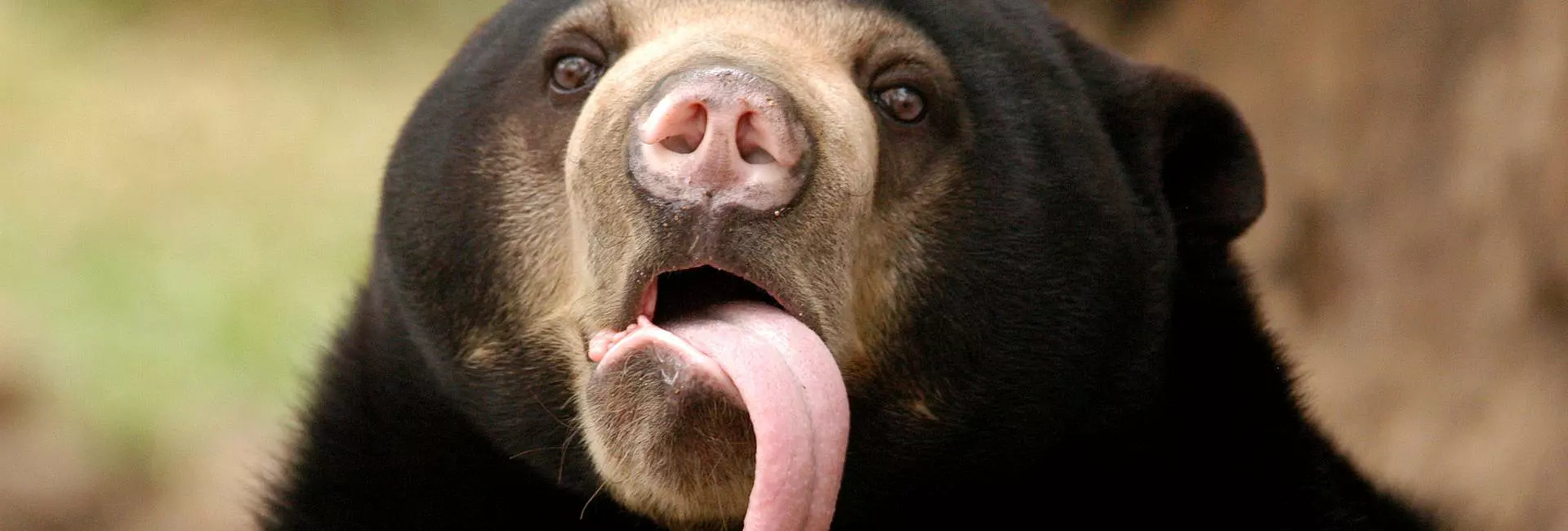
Bears
Bear Conservation
Bears come in many different shapes and sizes, from the mighty brown bears of Romania to the charming panda bears of China. They have made their way into childhood memories in the form of cuddly toys and legendary characters such as Winnie the Pooh and 'The Jungle Book's’ Baloo the Bear. Yet, despite such worldwide admiration, we've collectively let bear protection fall to the wayside, and all eight species are feeling the pressures of human interference. From deforestation, climate change, encroachment, poaching and hunting, bear conservation projects have never been more critical.
Volunteering with bears offers incredible opportunities to be at the forefront of bear conservation efforts. Volunteers help maintain enclosures, prepare food, monitor behaviour, and educate the public about the threats bears face. These programs ensure rescued bears receive the best possible care while advocating for stronger conservation measures. Whether you choose to work with bears on a project that solely focuses on bear conservation, such as the Romanian Bear Sanctuary or a project where you encounter them as part of your daily activities, like at the Bolivia or Laos Wildlife Sanctuary, you'll make strides in the bear conservation world, while exploring some of the most fascinating locations on earth.
Projects Do More
7 - 28 Nights from $1,494.00
Volunteer at one of Europe's best bear sanctuaries and aid in the conservation of these incredible animals.
View project14 - 84 Nights from $1,119.00
Help look after wildlife rescued from the illegal pet trade in Bolivia.
View project7 - 84 Nights from $1,057.00
Help to rescue, rehabilitate and release animals rescued from the illegal wildlife trade in mystical Laos!
View projectTours See More
On the Blog
Bear Information
bears at a glance
Endangered Status
Dependent on Species
Number remaining in the wild
Dependent on Species
Endemic Region
Across Europe, Asia, North & South America
Six of the eight bear species are listed as vulnerable on the IUCN Red List, with many populations decreasing:
- Sun bear: Vulnerable - decreasing
- Asiatic black bear: Vulnerable - decreasing
- American black bear: Least concern - increasing
- Brown bear: Least concern - stable
- Polar bear: Vulnerable - unknown population trend
- Giant panda: Vulnerable - increasing
- Andean bear: Vulnerable - decreasing
- Sloth bear: Vulnerable – decreasing
While none of the bear species are endangered, many are just one classification away. With populations decreasing due to habitat destruction, poaching, and human-wildlife conflict, these species may become endangered if bear conservation efforts do not intensify.
Bears face several threats, primarily due to human activities and environmental changes. Some of the main threats include:
- Habitat Loss & Fragmentation: Deforestation for agriculture, logging, and urban expansion reduces bear habitats. Roads and infrastructure also cut through bear territories, making it harder for them to find food and mates.
- Climate Change: Rising temperatures affect food availability (e.g., changing berry growth patterns and reducing fish populations). Melting ice impacts polar bears, making it harder for them to hunt seals. Altered hibernation patterns can also affect survival rates.
- Poaching & Illegal Trade: Some bears are hunted for their body parts (e.g., gallbladders used in traditional medicine). Trophy hunting and the illegal wildlife trade put additional pressure on bear populations.
- Human-Wildlife Conflict: As human populations expand, bears come into closer contact with people. Bears raid crops, livestock, or human settlements, leading to retaliation killings. Feeding on human food or garbage makes them dependent and more likely to be killed.
- Hunting & Overexploitation: Bears are legally hunted in some regions, but overhunting can threaten populations. Bear bile farming (mainly in Asia) involves keeping bears in captivity for bile extraction, causing suffering and population decline.
- Roadkill & Accidents: Bears crossing roads are at risk of being hit by vehicles, especially in areas with heavy traffic.
- Genetic Isolation & Small Populations: Some bear species (like the panda or some isolated grizzly populations) have limited genetic diversity, making them more vulnerable to disease and environmental changes.
Conservation efforts, such as protected areas, wildlife corridors, and anti-poaching laws, are helping, but continued action is needed to ensure bear survival. Volunteering with bears is a great way to contribute to bear conservation.
Collectively, we can support bear conservation by donating to wildlife organisations, avoiding products that contribute to deforestation, spreading awareness, volunteering with bears abroad, and practising responsible ecotourism when visiting bear habitats.
Yes, bear sanctuaries provide a safe environment for rescued and rehabilitated bears while also promoting research and education on bear conservation.









